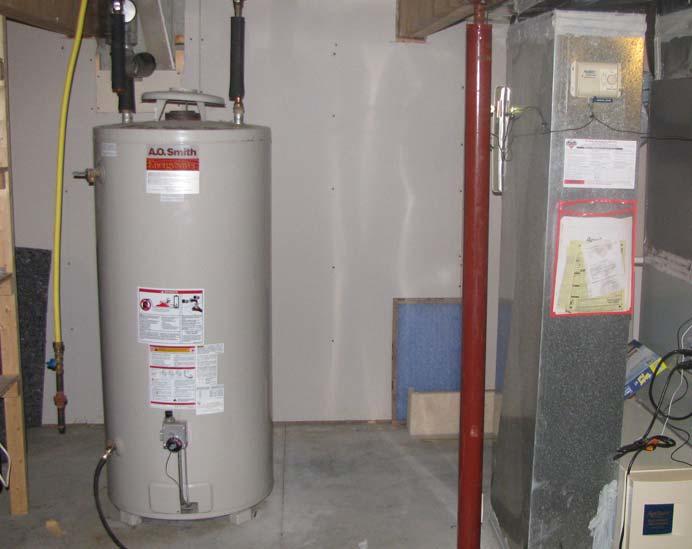What are your thoughts and feelings about Tips For Maintaining Your Hot Water Heater?
:max_bytes(150000):strip_icc()/reasons-gas-water-heater-not-working-5212987-hero-fe6b82a59053421c88b7d13ea311d3c5.jpg)
Hot water is vital for everyday comfort, whether it's for a rejuvenating shower or washing dishes. To ensure your hot water system runs efficiently and lasts much longer, normal upkeep is vital. This write-up supplies functional pointers and understandings on just how to preserve your home's warm water system to stay clear of disturbances and pricey repair services.
Introduction
Preserving your home's hot water system might appear overwhelming, yet with a couple of basic steps, you can ensure it runs efficiently for years to come. This guide covers whatever from recognizing your warm water system to DIY maintenance tips and recognizing when to call specialist help.
Relevance of Preserving Your Hot Water System
Routine maintenance not just prolongs the life expectancy of your warm water system yet likewise ensures it runs successfully. Overlooking upkeep can cause decreased performance, greater power expenses, and even early failure of the system.
Signs Your Warm Water System Needs Upkeep
Knowing when your warm water system needs focus can stop major concerns. Watch out for signs such as irregular water temperature, weird sounds from the heating unit, or rusty water.
Recognizing Your Warm Water System
Before diving into upkeep tasks, it's valuable to recognize the fundamental parts of your hot water system. Commonly, this includes the hot water heater itself, pipelines, anode poles, and temperature controls.
Regular Monthly Upkeep Tasks
Routine regular monthly checks can assist catch small issues before they rise.
Flushing the Hot Water Heater
Flushing your hot water heater removes sediment buildup, enhancing performance and prolonging its life.
Checking and Changing Anode Rods
Anode poles prevent rust inside the storage tank. Inspecting and replacing them when worn is vital.
Examining and Changing Temperature Level Settings
Changing the temperature level setups guarantees ideal efficiency and safety and security.
DIY Tips for Maintenance
You can execute numerous upkeep jobs yourself to keep your hot water system in leading problem.
Looking for Leakages
Routinely examine pipelines and links for leaks, as these can result in water damages and greater costs.
Evaluating Pressure Alleviation Valves
Evaluating the pressure safety valve ensures it works properly and stops too much stress buildup.
Protecting Pipes
Insulating hot water pipes decreases warm loss and can conserve power.
When to Call a Specialist
While DIY upkeep is useful, some concerns call for specialist experience.
Complex Issues Needing Professional Help
Examples include major leaks, electrical problems, or if your water heater is regularly underperforming.
Routine Specialist Upkeep Advantages
Expert maintenance can include complete assessments, tune-ups, and making certain conformity with security requirements.
Final thought
Regular upkeep of your home's warm water system is important for performance, durability, and expense financial savings. By adhering to these pointers and understanding when to look for specialist aid, you can guarantee a dependable supply of hot water without unforeseen disruptions.
How to Maintain an Instant Hot Water Heater
Before tinkering with your hot water heater, make sure that it’s not powered on. You also have to turn off the main circuit breaker and shut off the main gas line to prevent accidents. Also turn off the water valves connected to your unit to prevent water from flowing into and out of the appliance. 2. When you’re done, you have to detach the purge valves’ caps. These look like the letter “T” and are situated on either side of the water valves. Doing so will release any pressure that has accumulated inside the valves while at the same time avoid hot water from shooting out and burning your skin. 3. When the purge valves’ caps are removed, you have to connect your hosing lines to the valves. Your unit should have come with three hoses but if it didn’t, you can purchase these things from any hardware or home repair shops. You can also get them from retail stores that sell water heating systems. Read the user’s manual and follow it to complete this task properly. When the hosing lines are connected, open the purge port’s valves. 4. You should never use harsh chemical cleaners or solutions when cleaning your unit. Make use of white vinegar instead. It should be undiluted and you’ll probably use about 2 gallons. 5. Now flush your water heater. This task should probably take about 40 minutes. We can’t give you specific directions for this because the procedure is carried out depending on the type, model and brand of your heater. With that being said, refer to the user’s manual. 6. When you’re done draining the unit, you have to turn off the purge port valves again. Remove the hosing lines that you earlier installed on each of the water valves. Put the valve caps (purge port) back in their respective places and be very careful so as not to damage the rubber discs that are found inside these caps. 7. Now that everything’s back in place, check your user’s manual again to find out how to reactivate your water heating system. 8. Once it is working, turn one of your hot water faucets on just to let air pass through the heater’s water supply pipes. Leave the tap on until water flows smoothly out of it. https://www.orrplumbing.com/blog/2014/september/how-to-maintain-an-instant-hot-water-heater/

I found that blog entry about Tips For Maintaining Your Hot Water Heater when browsing on the internet. Do you know about another individual who is occupied with the subject? Take a moment to share it. We truly appreciate your readership.
Estimate